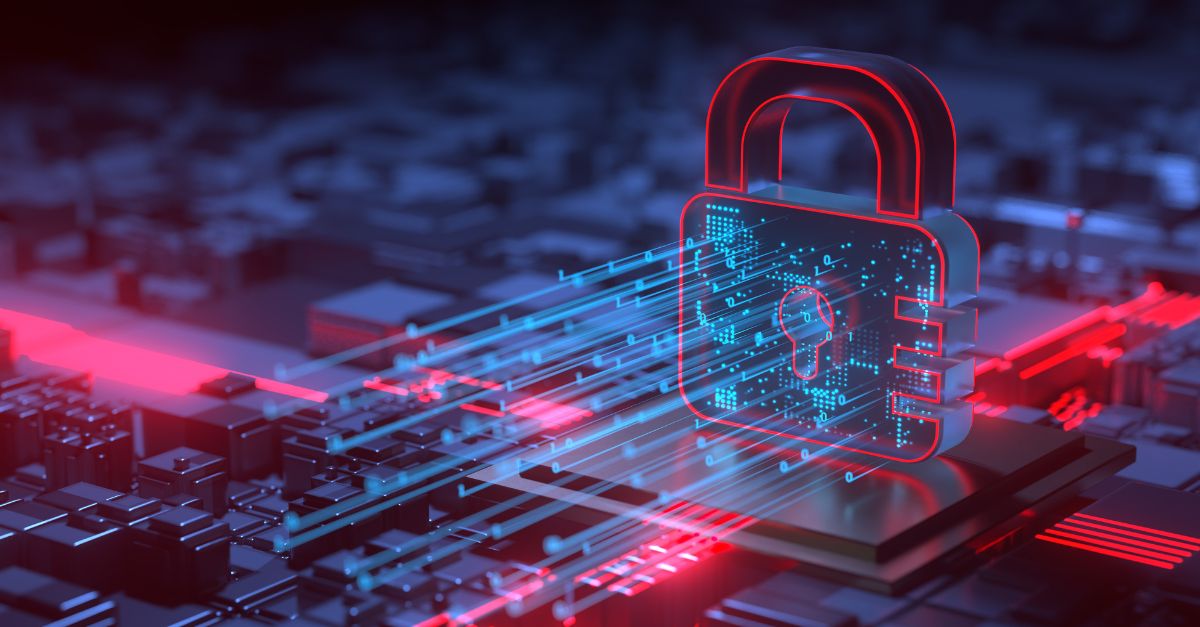October is celebrated as Cybersecurity Awareness Month and is an important opportunity for organizations to reflect on how they prioritize security within their business as well as their long-term strategies and practices. With the increasing frequency and sophistication of cyber threats, organizations must adopt robust strategies to protect their data and systems.
According to recent studies, cybercrime is expected to cost the world $10.5 trillion annually by 2025 and current trends indicate that this number is only set to increase. To counter this, businesses need to keep pace with the evolution of cybersecurity infrastructure.
For businesses of all sizes, protecting sensitive data and maintaining customer trust are paramount. A single breach can lead to significant financial losses, reputational damage, and legal repercussions. Therefore, it’s essential to stay ahead of cybercriminals by implementing effective security measures, including a robust Public Key Infrastructure (PKI) management system. With cybersecurity month coming to an end, now’s the best time to take stick of your cybersecurity strategy and ensure it includes a range of practices to cover all areas of vulnerability, from software to human error. Here are some of the best ways you can protect your business.
- Conduct Regular Security Audits
- Implement Effective Employee Education
- Using Strong Authentication Measures
- Integrating Automation to Ensure Consistent Security
1. Conduct Regular Security Audits
The first step to maintaining the integrity and security of your systems is by conducting regular security audits. These audits help to identify vulnerabilities, ensure compliance with security policies, and provide insights into potential areas for improvement. An audit can be a step-by-step process that looks something like this:
- Define the scope of your audit, focusing on critical systems, applications, and data. Gather all relevant documentation, such as security policies, procedures, and system configurations. This information provides a baseline for the audit and helps identify deviations from established standards.
- Perform vulnerability assessments to identify potential security gaps. Review access controls to ensure that only authorized users have access to sensitive data and systems. Analyzing audit logs for unusual or suspicious activity can help detect potential security incidents.
- Document your findings, including identified vulnerabilities, compliance issues, and recommendations for improvement. Work with your IT and security teams to address the identified issues and implement the recommended changes. This may involve updating software, reconfiguring systems, or enhancing security policies.
- Schedule follow-up audits to ensure that the implemented changes are effective and that new vulnerabilities have not emerged.
Regular audits help maintain a proactive security posture and ensure ongoing protection.
2. Implement Effective Employee Education
Your employees are the first line of defense against cyber threats. However, they can also be the weakest link, with human error being the leading cause of cyber breaches. Investing in regular cybersecurity training for your staff is crucial to ensuring that employees are not only informed on how to avoid compromise, but also empower employees to react in the case that it should happen.
Start by developing a comprehensive training program that covers the basics of cybersecurity, such as recognizing phishing emails, creating strong passwords, and following best practices for data protection such as through PKI certificates and signatures. Any security training programs should be updated regularly and performed regularly to ensure that personnel have a strong awareness of and prioritize security. Not only this but any security training program should work to foster an environment of trust so that employees are confident in responding or informing the correct person should a threat or issue arise. This is especially important in critical industries where IT and security infrastructures are more complex, such as with DevSecOps environments or industrial IoT manufacturers and providers.
By educating and training your employees, you reduce the risk of human error as a factor in security breaches. This not only helps protect your organization but also promotes a culture of security awareness and responsibility.
3. Using Strong Authentication Measures
Having strong authentication measures are important for maintaining access control of critical critical data and assets. There are a variety of authentication methods available, including implementing Multi-Factor Authentication (MFA), Single Sign-On (SSO) or certificate-based authentication.
- Multi-Factor Authentication (MFA) adds an essential layer of security by requiring users to provide two or more verification factors to gain access. These can be a range of factors like something the user knows (a password), something the user has (a smartphone or hardware token), and something the user is (biometric data like a fingerprint). This multi-layered approach makes it significantly more difficult for attackers to compromise accounts, even if one factor is breached.
- Single Sign-On (SSO) simplifies the user experience by allowing individuals to access multiple applications with a single set of credentials. This minimizes the risk of password fatigue, where users might resort to unsafe practices like reusing passwords. By centralizing authentication, SSO can streamline access management and improve overall security.
- Certificate-Based Authentication uses digital certificates to verify the identity of users and devices. These certificates are issued by a trusted Certificate Authority (CA) and contain the user’s public key and identity information. This method ensures secure communication and data integrity, as the certificates can be used to encrypt data and verify signatures. It’s particularly effective in enterprise environments where secure, authenticated communication between systems is critical.
4. Integrating Automation to Ensure Consistent Security
On the topic of digital certificates, automation is one of the best ways you can secure your online identity. Using automation for certificate management is becoming a must in the wake of a trend of shortening validity periods seen through the Apple 45-day announcement. As manual management becomes increasingly impractical and error-prone, using automation has many benefits:
- Reliability and Efficiency: Automating certificate management ensures that certificates are renewed, replaced, and revoked promptly without reliance on human intervention, freeing up time and resources for other projects.
- Minimizing Human Error: Managing certificates manually can result in human error, a risk which can increase with business and certificate portfolio size. Automation can prevent certificates becoming overlooked or misplaced.
- Scalability: As your business grows, automation scales effortlessly with your operations, handling an increasing number of certificates without additional manual effort.
- Adaptability to Industry Trends: With shortening validity, businesses need to adapt quickly to avoid lapses in security. Automated certificate management systems are designed to keep up with these changes, adjusting renewal schedules and ensuring continuous compliance with industry standards.
- Enhanced Monitoring and Reporting: Automated systems provide comprehensive monitoring and reporting capabilities, giving you real-time insights into your certificate status.
By leveraging automation in certificate management, businesses can achieve a higher level of security, efficiency, and compliance.
Maintaining your Security Year-Round
Utilizing these best practices is an essential part of keeping your enterprise safe. By encrypting sensitive data and ensuring secure communications, alongside using certificate automation and management platforms, you ensure a robust foundation for protecting your organization’s valuable information. Implementing stronger practices and ensuring that security is an upmost priority will significantly strengthen your cybersecurity posture, which is essential for safeguarding against the ever-evolving threats online.
We’re heading to the end of Cybersecurity Awareness Month now, and while a month of awareness can help bring security threats into the public conscience, it’s important to remember that maintaining effective digital security measures is a year-round commitment. Threats are constantly evolving, and to maintain the vigilance necessary to counteract them, companies need to stay informed and proactive. These practices are only the first step towards protecting your digital assets, and adapting your cybersecurity strategy beyond this month and into the future will be necessary to be both secure and trusted as a business.








